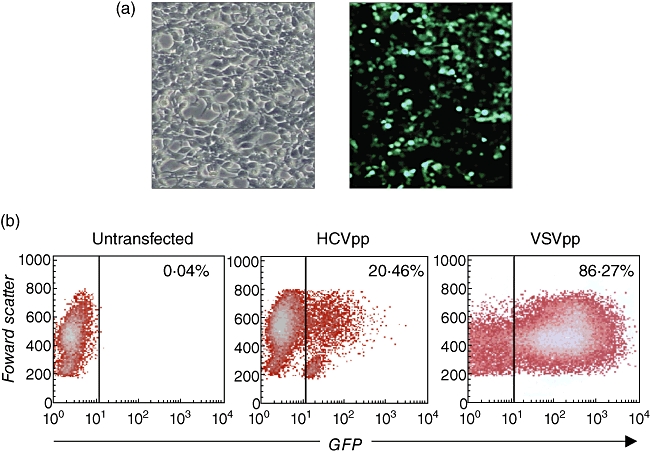Fig. 1.

Production and infectivity of hepatitis C virus pseudoparticles (HCVpp). (a) HEK293T cells were transfected transiently with expression vectors encoding the HCV E1 and E2 glycoproteins, retroviral core proteins and a packaging-competent green fluorescent protein (GFP)-containing retroviral transfer vector to produce HCVpp. Left: phase contrast microscopical picture of HEK293T cells 48 h after transfection. Right: fluorescence picture of HEK293T cells 48 h after transfection showing ∼40% GFP-positive cells confirming HCVpp production. (b) Infectivity of HCVpp produced by HEK293T cells. Huh-7 human hepatocellular carcinoma cells were infected with 500 µl HEK293T supernatant containing HCVpp, or vesicular stomatitis virus (VSV)-Gpp as a positive control, or left untransfected; 72 h after infection Huh-7 cells were analysed by flow cytometry for GFP expression.
